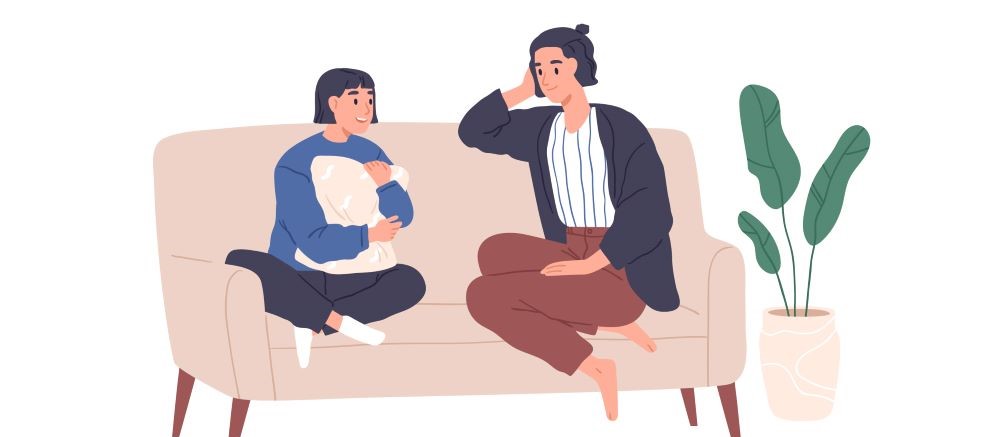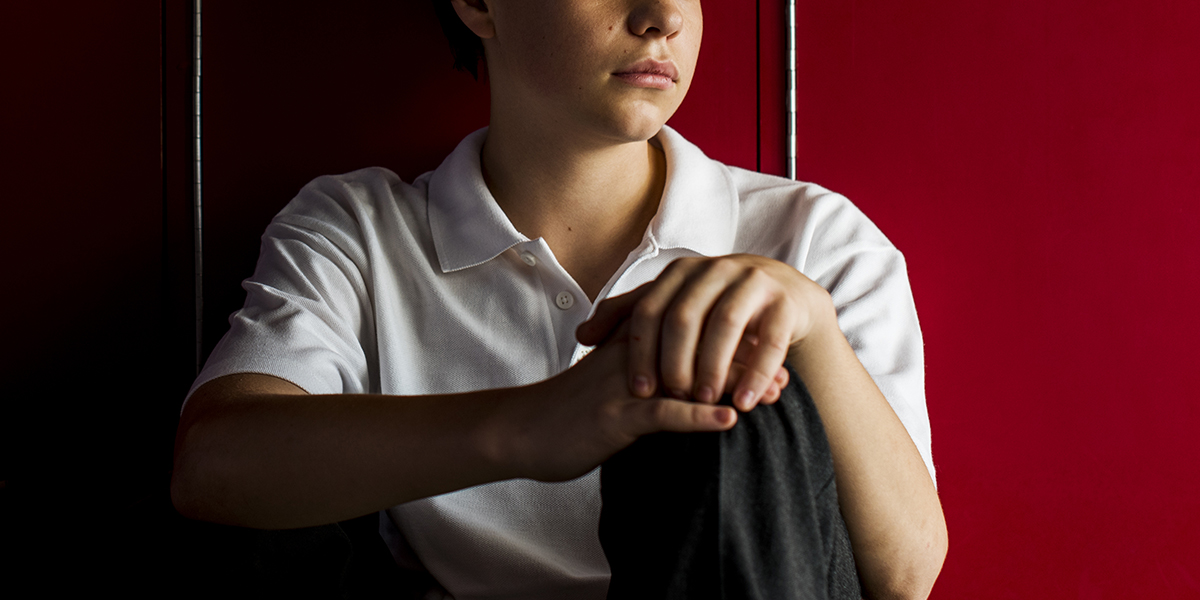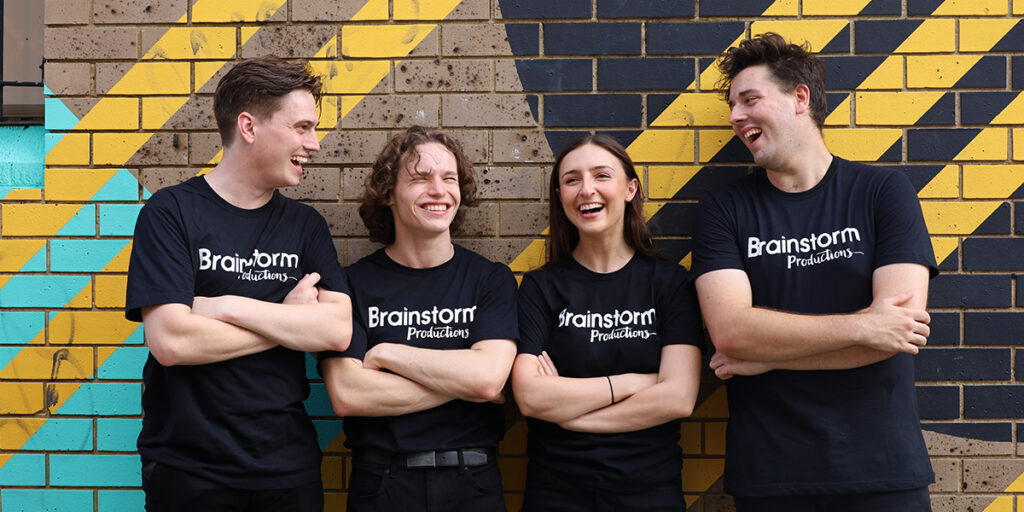Broaching the topic of suicide with your children is undeniably challenging. On average in Australia, nine people die by suicide each day. For young Australians, suicide remains the leading cause of death, and research shows that 1 in 13 young people aged 12–17 will seriously consider suicide.
Its prevalence means it’s likely that young people will be exposed to suicide at some stage, whether indirectly, such as a reference on TV or in conversations with friends or peers, or directly, through the loss of someone they know or love. It’s best to get on the front foot to ensure your child receives accurate, age-appropriate information in a way that helps them to feel safe, secure, and heard.
This article was written and published by Mental Health First Aid Australia. View the original article.
Talking about suicide does not “plant ideas” of suicide in children
Parents often worry that discussing suicide with their children may “plant ideas” or increase the likelihood of self-harm. However, it is important to know that open conversations about suicide do not contribute to its occurrence. On the contrary, open dialogue can create a safe environment where children feel comfortable asking questions and seeking clarification.
Talking to very young children about suicide
When it comes to discussing suicide with young children, it’s important to be honest and factual while not offering an overwhelming amount of information. By naturally speaking about tricky topics like this as part of everyday language, children are more likely to feel safe and comfortable to share about difficult things as they get older.
Things to remember when speaking to young children about suicide
- Be calm and create a comfortable environment
- Use straightforward, age-appropriate language
- Introduce mental health and mental illness
- Share a simple, easy-to-understand definition, such as “Suicide is when a person does something to make themself die”
- Explain emotional pain as it relates to suicide
- Let them know that suicide can be prevented and there are supports available
You might help them unpack the concept of pain, both physical and emotional. Explain that just as a person may feel intense physical pain from an injury or illness, some people experience deep emotional pain that you may not be able to see. Clarify that emotional pain is often overwhelming and sometimes it can become too difficult for a person to cope with. You might say something like:
“When someone is feeling extremely sad or overwhelmed, they may have thoughts of ending their own life. Feeling this way can make it hard to think clearly or ask for help, but there’s always help available.”

If your child asks “how” questions about suicide
Help them understand using simple, factual language without going into graphic detail. Don’t provide information that the child has not asked for. For example, you could explain that someone had deliberately taken too much medicine, without explaining what kind or how much.
Don’t use euphemisms such as “They were so sad and tired that they decided to go to sleep and never wake up”. This is confusing and can make children feel afraid that other people may not wake up, including themselves.
Young children may experience a range of emotions when learning about suicide for the first time, including sadness, anxiety, confusion, fear, or anger. Explain that people react differently to difficult situations and that their feelings are completely natural.
Let them know that there is help available for people thinking about suicide. This is a good opportunity to talk about sadness and the strategies they use to cope, such as talking with a trusted person, or doing things to help them express their feelings and feel better, such as playing with friends, making art, playing music or sport.
Discussing suicide with teens
By the time children start high school, young teens are likely to have encountered mental illness or suicide in some way, so it’s good to gauge where to begin by asking what they already know, or what they have heard at school, or from friends, or from media. They may even have personal experience to inform their understanding, so this is a good opportunity to open these crucial lines of communication.
These conversations can also play an important role in normalising the breadth of mental health challenges people face, providing information about supports available, dispelling any myths or misinformation, and asking what they might do if they experience poor mental health or suicidal thoughts.

When speaking with teens, the conversation can delve a little deeper while keeping in mind their individual capacity for understanding and coping with the feelings that may arise (some teens are more sensitive than others). It may help to define suicide in a bit more depth, saying something like this:
“Suicide is when a person ends their own life on purpose. People who die by suicide usually believe it is the only way to stop their emotional pain. Suicide is often associated with depression which can cause a person to feel intense emotional pain that they feel they can’t escape from. This is different from the sadness or pain felt after the death of a loved one.”
If you don’t feel well-equipped to have the conversation, or if your own distress is making it too difficult, that’s okay. You and your teen child can benefit from exploring a high-quality website such as Beyond Blue and learning together.
What to do if your child has a friend experiencing suicidal thoughts
The Teen Mental Health First Aid Action Plan may help teens to feel more confident in supporting a friend who is experiencing suicidal thoughts because it provides a structured framework to respond to a crisis.
When introducing them to the action plan, it is crucial to emphasise that while they may be able to provide crucial support to a struggling friend, it is best (and safest) for their friend to speak to a trusted adult to get the help they need. Remind them that they don’t need to do all of the actions or all in order – how they use the plan will depend on their friend’s problem, how serious it is, and when they get help from an adult.

Teen Mental Health First Aid Action Plan
- Look for warning signs: You can sometimes spot clues about what your friend might be feeling by listening carefully to their words, picking up on their body language, or noticing that they aren’t acting like themselves.
- Ask how they are: One way to find out more is to ask them how they are feeling. Choosing the right time and place can make it easier for them to open up. Have a plan of what you are going to say, and remember not to put pressure on them to talk. If they’re not ready to talk, remind them that they can speak to you whenever they are ready.
- Listen up: Be there for your friend and allow them to express their feelings and concerns without judgment or interruption. Be patient, show empathy, and avoid saying things like “cheer up” as this language can be unhelpful. Remember that listening is not just about words – watch out for body language, too.
- Help them connect with an adult: If your friend has opened up about their mental ill-health or suicidal thoughts, it’s important to encourage them to involve an adult who can help support them – and one who is likely to understand their problem. If your friend is in a mental health crisis, you should get the help of an adult straight away. If you’re not sure what’s going on and your friend doesn’t want to talk about it, and you’re really worried, you need to speak with an adult about your concerns.
- Your friendship is important: After the crisis has passed, or as your friend is getting better, do your best to get things back to normal. If your friend has been withdrawn, encourage them to start doing things socially again. Be supportive without making mental health the only thing you talk about.
After speaking to your child about suicide it’s natural to feel a range of emotions, so be sure to check in with yourself, prioritise appropriate self-care, and if you need additional support reach out to a professional service such as Lifeline.
Suicide can be prevented. Openly talking about suicidal thoughts and feelings may help to save a life. If you’d like to deepen your understanding and confidence to respond effectively to support people in mental health crisis, see the range of Mental Health First Aid courses.
This article was written and published by Mental Health First Aid Australia. View the original article.
About Brainstorm Productions
Brainstorm Productions deliver live theatre performances in primary and secondary schools, addressing a range of student wellbeing issues, including bullying, cyber safety and mental health. Brainstorm Productions does not deal with the issue of suicide in any of their performances, however some performances do address issues such as anxiety, depression, loss and grief in an age-appropriate way.
All performances are developed with a clinical psychologist and include content on resilience, help-seeking and peer support. Mental health references are informed by current research and Mindframe’s Guidelines for Stage & Screen. Schools are given information prior to the performance to prepare their staff and students, including content warnings, links to support services and guidelines to ensure students have access to support within the school.
Each performance is followed by a Q&A in which the actors provide information about a range of support options, including confidential services such as Kids Helpline. Each performance is supported by a suite of curriculum-linked classroom resources, including post-performance discussion guides to unpack the issues and keep the conversations going.
Brainstorm Productions is an R U OK? School Partner and is endorsed by the eSafety Commissioner as a Trusted eSafety Provider. Brainstorm is also listed as an evidence-based program on the Victorian Department of Education’s Schools Mental Health Menu.




